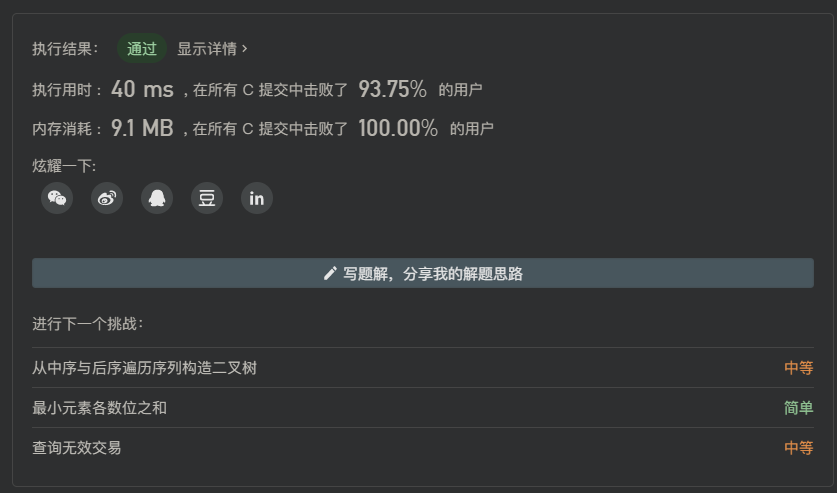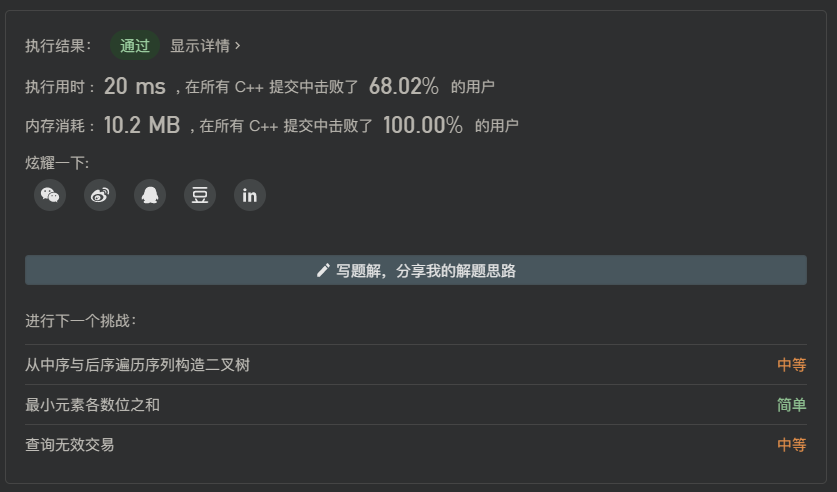题目描述
输入一个矩阵,按照从外向里以顺时针的顺序依次打印出每一个数字。
示例 1:
1 | 输入:matrix = [[1,2,3],[4,5,6],[7,8,9]] |
示例 2:
1 | 输入:matrix = [[1,2,3,4],[5,6,7,8],[9,10,11,12]] |
限制:
- 0 <= matrix.length <= 100
- 0 <= matrix[i].length <= 100
注意:本题与主站 54 题相同:54. 螺旋矩阵
题解
顺时针方向打印无非就是按着“右下左上”的方向进行遍历并打印,碰到边界就拐弯,然后再缩小边界。
源码有Java、C、C++两种,思路基本差不多。
1 | class Solution { |

1 | /** |

1 | class Solution { |

推荐
极力推荐两个我喜欢的算法公众号的文章:


